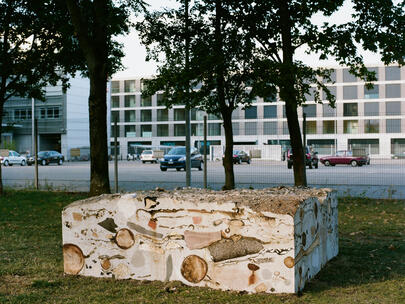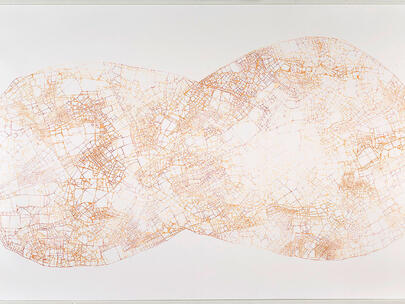
Dreamer (Wie tief ist die Zeit?)
iArt in public space
Concrete, wood, stones, metals
1100 cm × 206 cm × 206 cm
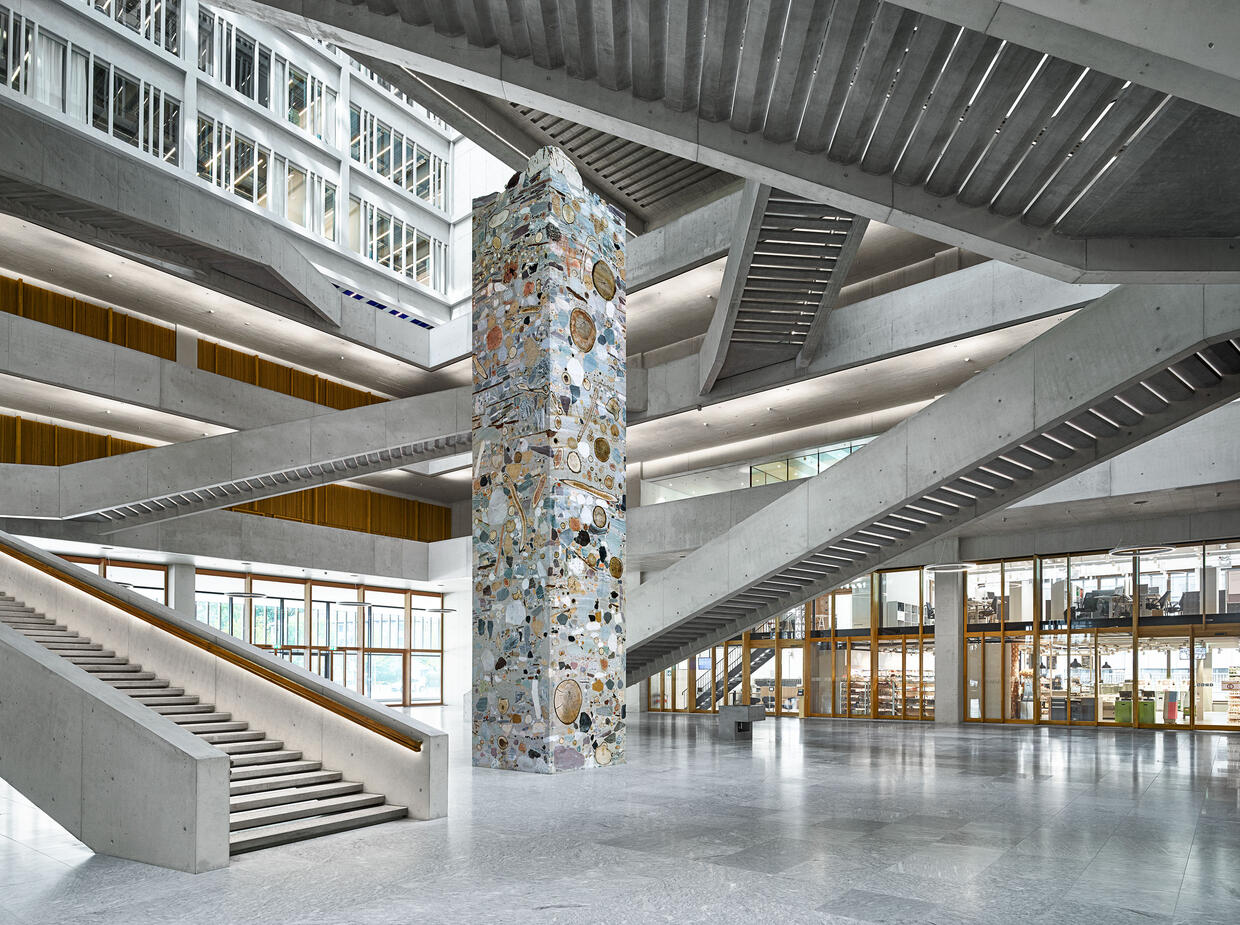
Dreamer (Wie tief ist die Zeit?), Fachhochschule Nordwestschweiz Campus Muttenz, 2018. Photo: Tom Bisig
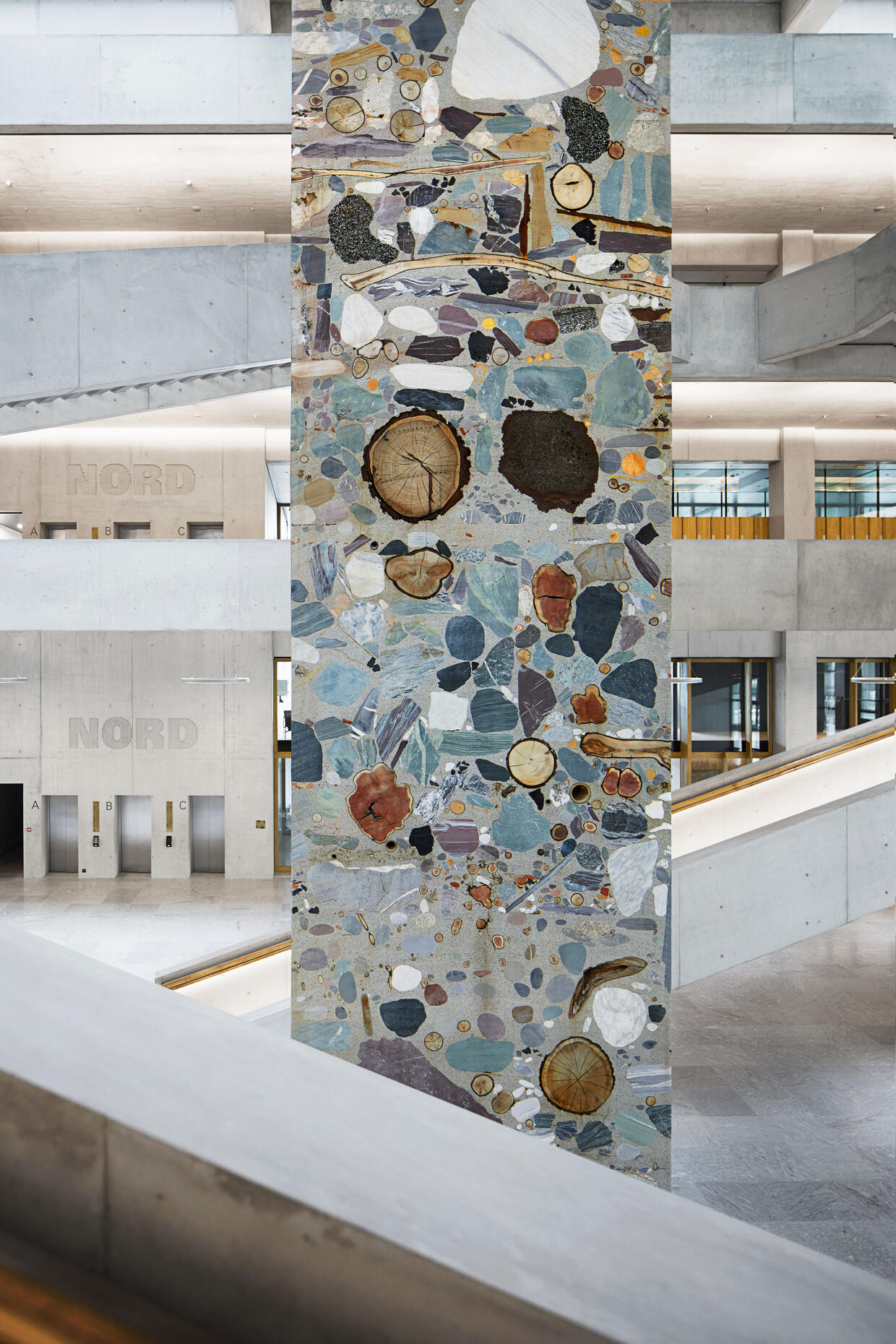
Dreamer (Wie tief ist die Zeit?), Fachhochschule Nordwestschweiz Campus Muttenz, 2018. Photo: Tom Bisig
Dreamer (Wie tief ist die Zeit?), Fachhochschule Nordwestschweiz Campus Muttenz, 2018. Photo: Tom Bisig
In the atrium of the new FNHW building (University of Applied Sciences and Arts of Northwestern Switzerland) in Muttenz, I have realized my most spectacular art project to date: an 11 meters high monolith weighing approximately 100 tons, densely filled with natural objects cast in concrete. These objects have been carefully collected and selected over a period of two years.
Thematically, this work concerns the challenge to keep up our inner stability and existential self-assurance in a world that becomes increasingly virtual, simulative, and therefore continuously loses substance and objectivity. It is a challenge that all those who are going to teach and study architecture, life sciences, pedagogics, or social work in this new building will have to meet every day.
My work as an artist has always been plastic and performative at the same time. The formation of my sculptures is an essential, highly visible and often scenic or staged part of the artistic experience. Thus, processes are condensed, time is changed into substance, and events are changed into sculptural forms. This was also my general approach to this art-in-architecture project.
The huge monolith contains materials found in nature. In these materials, the course of time has already come to rest: dead wood, stone, and metal. On a base area of 4 square meters, these finds were piled up and cast in concrete in stages from January to April 2017. Then, from June to December, the four sides of the monolith were sliced up with a diamond rope saw to expose the flush-cast materials on the inside. Hence, the result is not only an art object that, quite literally, tells a tale of time. The disclosure of its production process also turns it into a conspicuously archaeological event of high aesthetical impact.
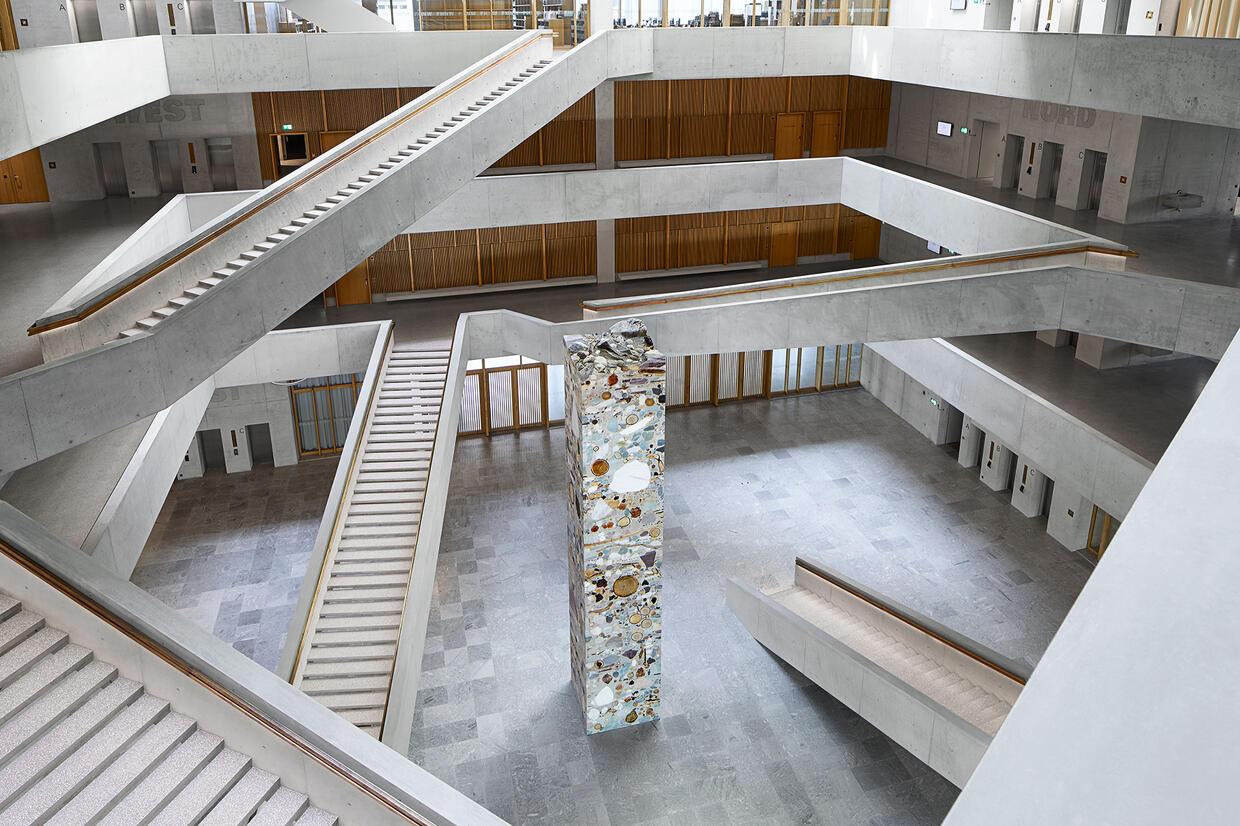
Dreamer (Wie tief ist die Zeit?), Fachhochschule Nordwestschweiz Campus Muttenz, 2018. Photo: Tom Bisig
Texts about Dreamer
- Zeit. Raum. Traumgeboren von Matthias Michel (de) (120 KB)
- Eine Frau plädiert für mehr Substanz von Mathias Balzer (de) (521 KB)
- Denkanstoss, tonnenschwer von ??? (de) (24 KB)
- Umgekehrte Archäologie von Susanna Koeberle (de) (345 KB)
- Schichten der Schweiz / La Suisse en plusieurs couches von / de Alexandra von Ascheraden (de/fr) (544 KB)
